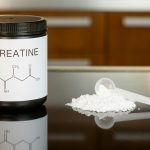
In the fast-moving world of metabolic medicine, GLP-1 receptor agonists (GLP-1 RAs) have earned a reputation as miracle molecules. Simply listen to any well-known podcaster like Dr. Mark Hyman or Dr. Mike Israetel give their “two cents,” and it is apparent that their ability to regulate appetite, drive weight loss, and improve glycemic control has transformed the landscape for individuals living with obesity and type 2 diabetes. Nevertheless, as with any new therapy that moves at breakneck speed from clinical trials to cultural zeitgeist, we must step back and ask the bigger question: What are the long-term consequences, especially when it comes to aging? Are GLP-1s the fountain of youth, or could they quietly accelerate frailty in ways we have yet to fully grasp?
The truth, as always, lies in the nuance. GLP-1s are not one-dimensional. Their benefits are real and profound, particularly for cardiovascular health. Yet, emerging research warns of trade-offs, especially when muscle loss enters the equation. This article unpacks both sides of the coin and explores how personal trainers, health professionals, and patients alike can lean into a muscle-centric model of longevity to balance the benefits while resisting frailty.
The “Pro” Side: Cardiovascular Protection and Metabolic Mastery
Let’s start with what makes GLP-1s such powerful tools for long-term health. At the forefront is cardiovascular risk reduction. GLP-1 RAs have been shown to significantly decrease the incidence of major cardiovascular events in people with type 2 diabetes (Pan et al., 2024; Turkistani, 2025). These outcomes are not limited to just blood pressure or lipid levels. Rather, they extend to mortality itself, offering protection against some of the most prevalent killers of aging adults.
In addition to their heart-protective effects, GLP-1s have demonstrated anti-inflammatory properties and improved liver function, which correlate with improved biological aging markers (Celsa et al., 2025; Engström et al., 2023). Specifically, when liver enzymes are optimized and systemic inflammation is reduced, the entire aging process is positively impacted. Furthermore, newer data points to favorable cognitive outcomes associated with GLP-1 therapy, underscoring their role in neuroplasticity and long-term brain health (Song et al., 2020).
In short, the metabolic reprogramming initiated by GLP-1s is not trivial. These medications appear to reshape the internal terrain of aging bodies by sharpening cognition, decreasing heart disease, and improving glucose regulation. However, there is a caveat.
The “Con” Side: Muscle Loss, Frailty, and the Price of Passive Weight Loss
Despite their potential metabolic benefits, GLP-1 medications present a significant and often overlooked drawback: the risk of lean muscle loss. This concern is especially pressing for older adults, who are already at risk for sarcopenia, an age-related decline in muscle mass and strength that can exacerbate frailty and functional deterioration.
In turning our attention back to the drugs themselves, clinical research indicates that while GLP-1s promote weight loss, a disproportionate percentage of that loss can come from skeletal muscle if no countermeasure is in place (Abdulla et al., 2020; Abdulla et al., 2022). In other words, patients may get lighter but not necessarily healthier.
Thankfully, there is a silver lining. Studies reveal that GLP-1 infusions can overcome anabolic resistance when combined with nutrient feeding, particularly in older populations (Abdulla et al., 2020). These therapies have enhanced muscle perfusion and nutrient uptake, suggesting that the muscle loss narrative can be rewritten if the right strategies are in place.
Nevertheless, if we fail to incorporate resistance training and sufficient protein intake, this new class of medications could unintentionally contribute to long-term frailty, decreased mobility, and accelerated biological aging (Old et al., 2025).
The Longevity Paradox: Weight Loss at What Cost?
Herein lies the paradox. GLP-1s lower cardiovascular risk and improve metabolic markers, yet their very effectiveness in reducing body weight can tip the scale toward frailty if muscle preservation strategies are not prioritized. This isn’t speculation—it’s a biological trade-off we’ve seen before in other rapid weight loss models.
The most forward-thinking wellness professionals, therefore, must adopt a longevity-first perspective, one that goes beyond weight loss and asks deeper questions about quality of life and physical robustness as we age:
- Are we protecting muscle mass as much as we’re pursuing weight loss?
- Is our training program structured to resist the aging process, not just reduce the number on the scale?
- Are we future-proofing clients through movement, nutrition, and strength programming?
Building Longevity-Focused Programs that Resist Frailty
So what can trainers, coaches, and clinicians do to mitigate the risks while preserving the benefits? The answer is to build muscle-centric, frailty-resistant protocols that complement GLP-1 therapy. This means:
- Mandatory Resistance Training: At least 2–3 days per week of full-body strength training at moderate to high intensities. Not optional. Not secondary.
- Prioritized Protein Intake: Clients on GLP-1s often experience appetite suppression. Protein must be emphasized, and in some cases, supplemented, to meet anabolic thresholds.
- Functional Movement Assessments: Track power, gait speed, grip strength, and stair-climbing capacity as core longevity metrics.
- Cycle Off Smartly: If clients plan to taper off GLP-1s, begin strength and protein loading protocols before the cessation window to buffer against muscle rebound.
The goal is not just weight maintenance. The goal is to build a body and brain that can perform, protect, and persist into later life.
The Muscle is the Message
GLP-1 RAs are a medical breakthrough, but they are not a silver bullet. Used in isolation, they can be a double-edged sword. When paired with resistance training and muscle-preserving strategies, however, they may represent one of the most powerful tools we have to extend healthspan, reduce cardiovascular events, and keep people vibrant well into their later decades.
The takeaway is clear: We must train for the life we want to live, not just the weight we want to lose.
Let weight loss be the side effect. Let strength, independence, and clarity be the outcome.
References
Abdulla, H., Phillips, B., Wilkinson, D., Gates, A., Limb, M., Jandova, T., … Atherton, P. (2022). Effects of GLP-1 infusion upon whole-body glucose uptake and skeletal muscle perfusion during fed-state in older men. The Journal of Clinical Endocrinology & Metabolism, 108(4), 971–978. https://doi.org/10.1210/clinem/dgac613
Abdulla, H., Phillips, B., Wilkinson, D., Limb, M., Jandova, T., Bass, J., … Atherton, P. (2020). Glucagon-like peptide 1 infusions overcome anabolic resistance to feeding in older human muscle. Aging Cell, 19(9). https://doi.org/10.1111/acel.13202
Celsa, C., Pennisi, G., Tulone, A., Ciancimino, G., Vaccaro, M., Infantino, G., … Petta, S. (2025). Glucagon-like peptide-1 receptor agonist use is associated with a lower risk of major adverse liver-related outcomes: A meta-analysis of observational cohort studies. Gut, 74(5), 815–824. https://doi.org/10.1136/gutjnl-2024-334591
Engström, A., Wintzell, V., Melbye, M., Svanström, H., Eliasson, B., Guðbjörnsdóttir, S., … Pasternak, B. (2023). Association of glucagon-like peptide-1 receptor agonists with serious liver events among patients with type 2 diabetes: A Scandinavian cohort study. Hepatology, 79(6), 1401–1411. https://doi.org/10.1097/hep.0000000000000712
Old, V., Davies, M., Papamargaritis, D., Choudhary, P., & Watson, E. (2025). The effects of glucagon-like peptide-1 receptor agonists on mitochondrial function within skeletal muscle: A systematic review. Journal of Cachexia Sarcopenia and Muscle, 16(1). https://doi.org/10.1002/jcsm.13677
Pan, H., Chen, J., Chen, H., Yeh, F., Sun, C., Huang, T., … Wu, V. (2024). GLP-1 receptor agonists’ impact on cardio-renal outcomes and mortality in T2D with acute kidney disease. Nature Communications, 15(1). https://doi.org/10.1038/s41467-024-50199-y
Pojskic, L., Mršić, D., & Macić-Džanković, A. (2023). The benefits of GLP-1 receptors in cardiovascular diseases. Frontiers in Clinical Diabetes and Healthcare, 4. https://doi.org/10.3389/fcdhc.2023.1293926
Song, J., Wang, M., Yoon, G., & Jo, J. (2020). Exendin-4 improves long-term potentiation and neuronal dendritic growth in high-fat diet mice and neurons under metabolic imbalance conditions. https://doi.org/10.21203/rs.3.rs-109387/v1
Turkistani, Y. (2025). Glucagon-like peptide-1 receptor agonists: A review from a cardiovascular perspective. Frontiers in Cardiovascular Medicine, 12. https://doi.org/10.3389/fcvm.2025.1535134
Ueda, S., Nakahara, H., & Miyamoto, T. (2013). Effects of exercise on glucagon-like peptide-1 (GLP-1). The Journal of Physical Fitness and Sports Medicine, 2(2), 221–224. https://doi.org/10.7600/jpfsm.2.221
Wu, L., Zhou, M., Xie, Y., Lang, H., Li, T., Yi, L., … Mi, M. (2022). Dihydromyricetin enhances exercise-induced GLP-1 elevation through stimulating cAMP and inhibiting DPP-4. Nutrients, 14(21), 4583. https://doi.org/10.3390/nu14214583






